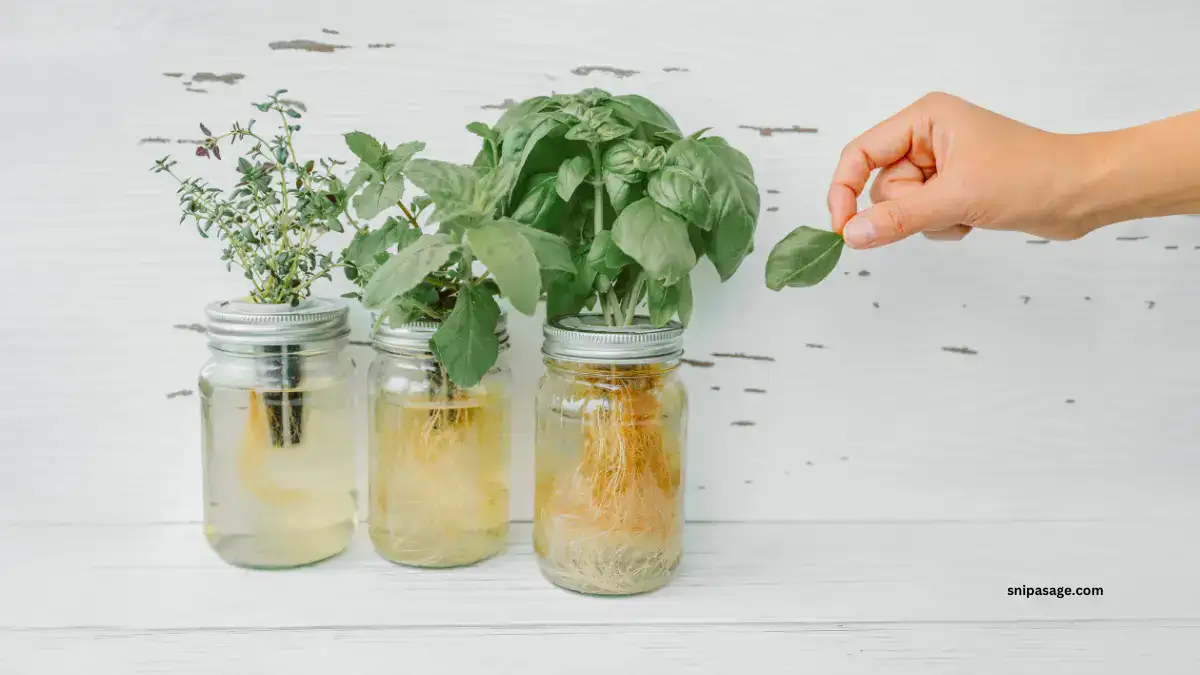The concept of hydroculture is a way to avoid soil and have plants grow using water with nutrients. This kind of growing method does not require as much water as the traditional garden because it’s part of the hydroculture system that saves space for other use options. There are several kinds of DIY hydroponic systems, each having its own merits and difficulty.
If you want to farm all year round or don’t have enough space outside your house, it is possible to set up DIY hydroponic systems indoors.
Types of DIY Hydroponic Systems
There are many different types of DIY hydroponic systems available for consideration, each with its advantages and levels of complexity. Here are some examples:
1. Wick Systems:
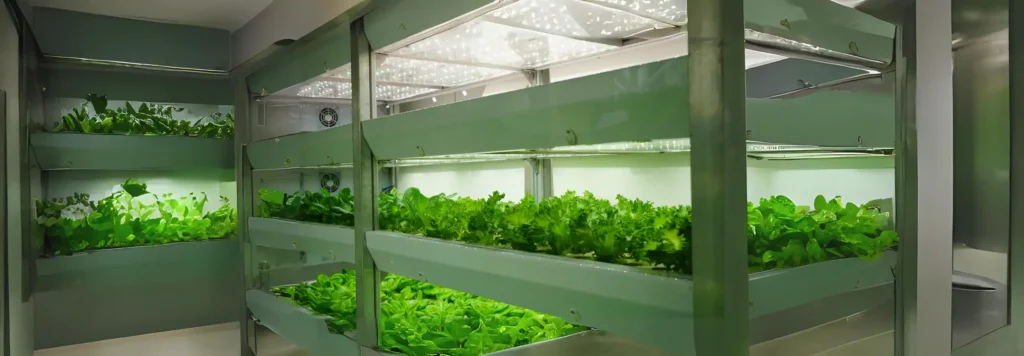
This is the simplest type of hydroponic system in existence; it uses a wick to bring nutrient-laden water from a reservoir to plant roots without any energy input, such as electricity or pumps.
| Pros | Cons |
| Simple, cheap, no electricity needed. | Not suitable for large or water-hungry plants, risk of overwatering or nutrient imbalance. |
2. Deep Water Culture (DWC) Systems:
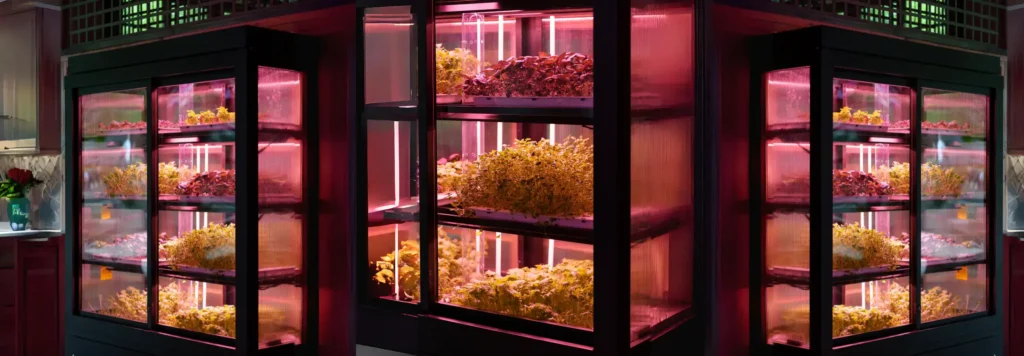
In this type, the plants float on top of the water in which their roots are submerged. At the same time, an air pump delivers oxygen at their root ends, making this design appropriate for beginners.
| Pros | Cons |
| High yield, low maintenance, easy to scale up. | Requires a lot of water and nutrients, water temperature and pH can fluctuate, risk of root rot or algae growth. |
3. Nutrient Film Technique (NFT) Systems:
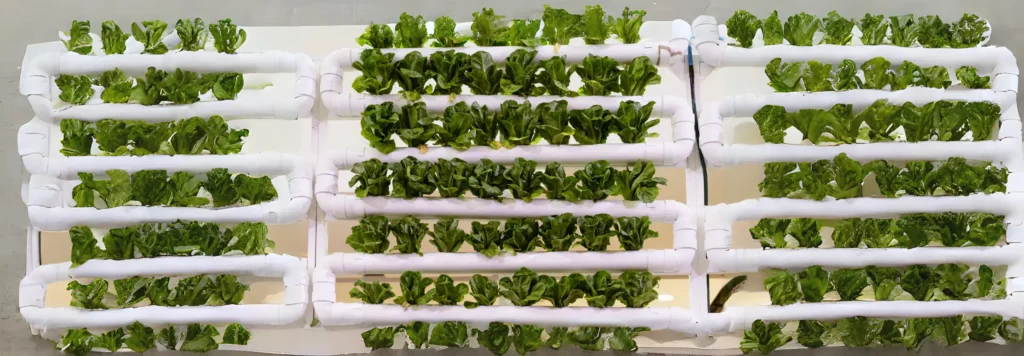
NFT systems use channels or gutters where nutrient solution flows continuously over plant roots. This system becomes more complicated since it requires a pump that maintains a flow rate throughout the entire stage.
| Pros | Cons |
| Efficient use of water and nutrients, high yield, easy to harvest. | Requires electricity and precise control of water flow, vulnerable to power outages or pump failures, not suitable for large or heavy plants. |
4. Ebb and Flow (Flood and Drain) Hydroponic Systems:
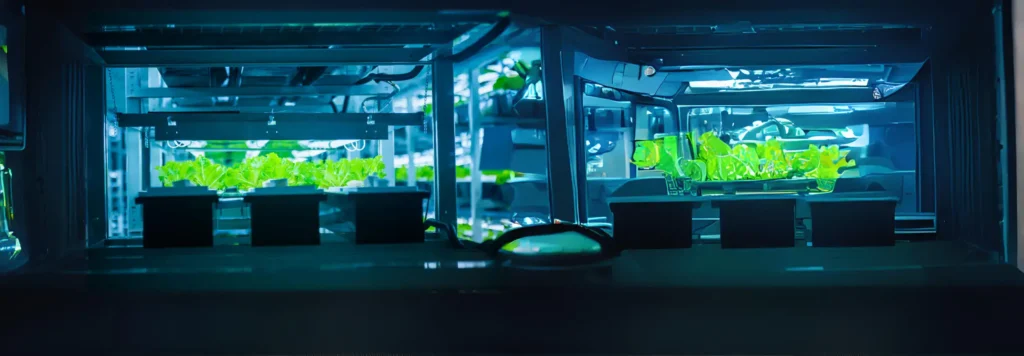
These kinds fill the plant roots with nutrient solution, then after some time, let it recede back into containers; the cycle repeats after regular intervals. Slightly more complicated than Ebb and Flow systems, they need flooding/drain cycles regulated by a timer and a pump.
| Pros | Cons |
| Versatile, suitable for a variety of plants and media, and efficient use of water and nutrients. | Requires electricity and a complex setup, vulnerable to power outages or pump failures, risk of root rot or fungal infections. |
5. Drip Systems:
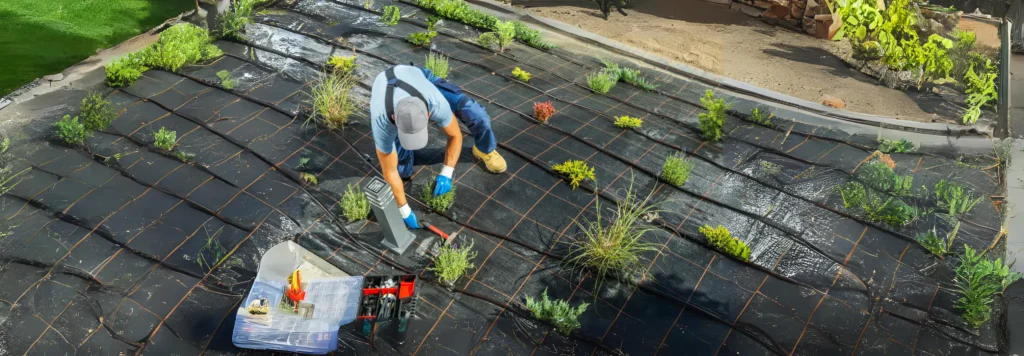
Water drops directly onto plants through small hoses during drip irrigation. A tiny electric pump pushes liquid laced with nourishment through tubes into the growing medium above. It is then emitted slowly around roots before draining into the bottom side vessel/container. Drip irrigation can be done without cycling or with cycling.
| Pros | Cons |
| Precise control of water and nutrient delivery, suitable for a variety of plants and media. | Requires electricity and a complex setup, prone to clogging or leaking, and can waste water and nutrients. |
6. Aeroponic Systems:
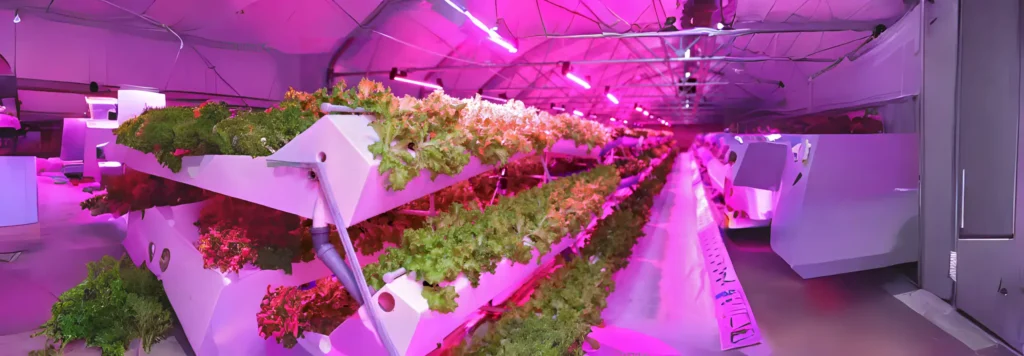
Aeroponics is like a high-tech version of DIY hydroponics because the roots hang in the air while being sprayed with nutrient water. This works very well for those people who are experienced in hydroponic gardening.
| Pros | Cons |
| Maximum oxygenation of roots, minimal use of water and nutrients, high yield, easy to harvest. | Requires electricity and a sophisticated setup, prone to clogging or malfunctioning, vulnerable to power outages or pump failures, and not suitable for large or heavy plants. |
7. Kratky Hydroponics System:
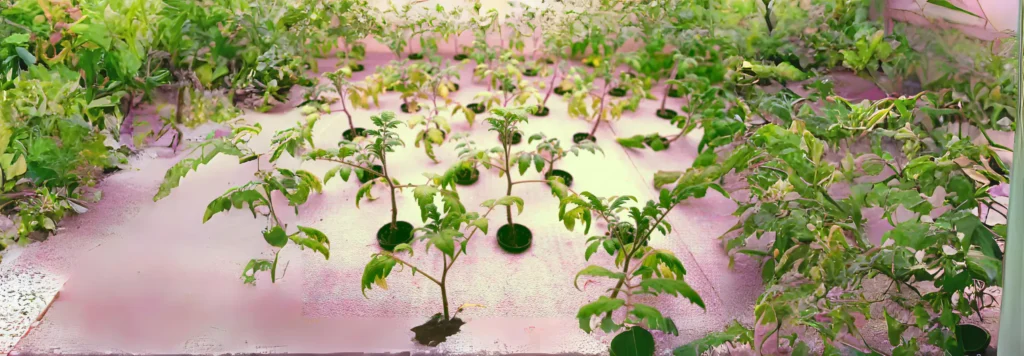
Using the Kratky Hydroponics System, it is easy to grow plants yourself. The initial setup takes only a short time, and after that, it does not need much attention. It involves using a glass jar filled with water, nutrients, and oxygen mixture for plant growth.
| Pros | Cons |
| No electricity, pumps, or wicks are needed, simple and cheap, suitable for small home gardens or large-scale production. | Not good for large or long-term plants, water temperature and pH can fluctuate, risk of root rot or algae growth, and nutrient solution cannot be replenished. |
8 . Vertical DIY Hydroponics System:
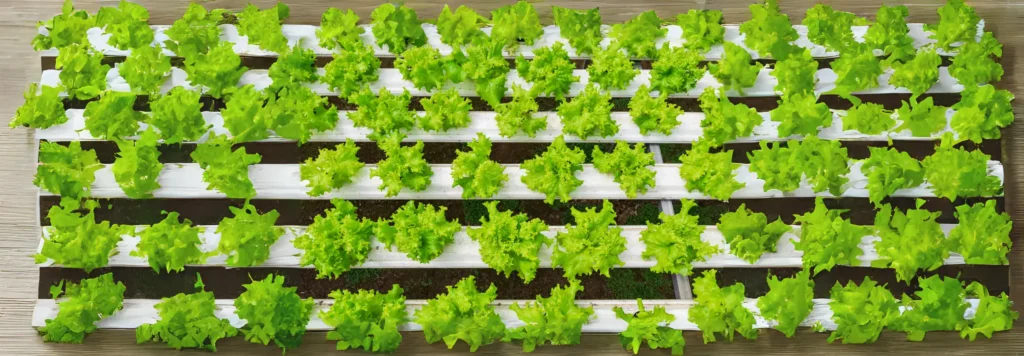
These systems let plants thrive without soil, relying just on water, nutrients, and light. You can control the environment better with this system because you can easily monitor and adjust the amount of water as well as nutrients that get into the plants.
When starting DIY hydroponics, pay attention to where you will place your system, the lighting expectations of your crops, the kind of plants preferred for growing, and the required materials as well. It would also be better if construction guides or instructional videos were followed for their installation.
Based on Your Interest in Simple DIY Hydroponic Systems
There are a number of types one might consider depending upon what precisely one is looking for when considering DIY hydroponic systems like:
1. Small-Scale Indoor Systems
Simple hydroponic systems, such as the Kratky method for small indoor setups, can be started off with. These need no energy or pumps and are ideal for producing leafy greens and herbs in tiny containers such as repurposed bottles or mason jars. Alternatively, one may opt to create a Deep Water Culture (DWC) system where plants are suspended in a nutrient solution pumped with air into their roots.
2. DIY Hydroponic System pvc
One popular DIY hydroponic system involves using PVC pipes to create a platform for growing lettuce and herbs, among others. This is easily adaptable to available space indoors or outdoors.
3. Ebb and Flow Systems
In some cases, ebb and flow systems are called flood and drain systems, which are a bit more complicated. A part of the process requires watering plant roots temporarily with the nutrient solution before it drains back into the reservoir. This cycle repeats at regular intervals.
4. Nutrient Film Technique (NFT)
For people who would like something more advanced, the NFT system continuously feeds nutrients to plant roots through channels or gutters. Many homemade systems use rain gutters as pre-fabricated channels.
5. Aeroponic Systems
Aeroponic systems are some of the top-notch DIY hydroponic setups that spray plant roots with nutrient water while they dangle on air strings. This technique is better suited for people who already know how to make hydroponic gardens.
6. Large-Scale Outdoor Systems
Suppose you want a more extensive outdoor setup. In that case, you can extend this concept by including other types of the previously mentioned systems within it. Various crops like vegetables and fruits can be cultivated using these setups that work best when there is enough room for them.
7. Budget-Friendly Options
You could spend less than $500 on your own hydroponic system if you’re short of cash. Even materials that are cheap or that you have lying around at home can be used. However, it’s important to spend some extra amount on getting a good pump because it’s necessary for the proper functioning of this equipment.
Getting Started
To begin with DIY hydroponics, think about the following:
- Space: Figure out where you want to set up your system, whether it’s inside or outside.
- Light: If you’re growing indoors, you may need artificial lights to make sure your plants get enough light.
- Plants: Choose what you want to grow. Starting with leafy greens and herbs is usually easier for beginners.
- Materials: Collect all the things you need, like containers, PVC pipes, pumps, air stones, grow media, and nutrient solutions.
- Building: Follow step-by-step instructions or watch videos to put together your system.
Monitor your plants regularly and adjust the nutrient and pH levels as needed to ensure a successful hydroponic garden.
Most Important Key points:
- PVC pipes, buckets, bottles, jars, tubs, trays, or boxes are perfect for creating your own hydroponic systems.
- But you need to make sure that it’s strong enough, doesn’t let water through, and is safe for plants.
- DIY hydroponic systems can be customized based on a person’s space, budget, and preferences.
- To the extent that it becomes personalized to meet your needs, you determine its size, shape, and setup.
- You choose the plants to use in your setup as well as what materials to use and nutrients too.
- With DIY hydroponics systems we can grow more plants faster with increased yields.
- They help conserve water and fertilizer, hence reducing pest problems and plant disease occurrences.
- These systems allow you to grow many crops throughout the year, even during winter seasons in colder areas where soil gardening would be impossible.
- It may be challenging to create your own system, but this involves having electricity pumps, timers, etc.
- Sometimes, the system may fail to work well or even fail completely, thereby putting one at risk of losing all their crop production efforts invested in this venture.
- It is important to check water quality and pH levels in order to decide whether or not the nutrient solution should be disposed of.
- While there would be no harm, it is always better to have a cautious attitude if there is any suspicion of pollution.
- Detrimental effects have been observed for contamination cases like overuse of metallic ions.
- One needs to avoid self-poisoning brought about by misusing cost-cutting techniques.
- It is essential that one continually assesses the potential risk before disposing of a reusable item.
- When dealing with long-lived dangerous substances such as heavy metals, pesticides, and herbicides, caution cannot be overstressed.
Materials That are Needed to Build a DIY Hydroponic Systems
To build a DIY hydroponic system, you will need the following materials:
Container: Plastics such as a big plastic storage tote or a 5-gallon opaque container that has a cover. The reservoir for the nutrient solution is provided by these containers.
Net Cups: These ones permit plants to be held above nutrient solution while their roots go downwards into it.
Air Pump with Air Stone: Nutrient solutions are oxygenated using this gadget, hence keeping plant roots healthy.
Hydroponic Nutrients: Hydroponic nutrients are those special types meant for hydroponic systems. These nutrients are intended to provide vital elements needed for growth in plants, which they usually obtain from soil.
Growing Medium: This is where the plants grow. It can either be a soil-less medium like Rockwool, perlite, or coconut coir.
Water Circulation System: Some of these include water pumps in systems like Ebb and Flow or Drip systems where the solution is being circulated around the system.
Lighting (if indoors): You will need a suitable grow light if you’re growing your plants indoors so as to offer them the right light spectrum required for photosynthesis.
PVC Pipes or Tubes: In some hydroponic systems such as NFT or DWC, PVC pipes or tubes hold the plants and circulate nutrient solutions, respectively.
Drill and Hole Saw Bit: The net cups require holes on the lid of this container that are produced using a drill and hole saw bit.
Timer: A timer would be appropriate when determining when there is light and sometimes watering in some systems. Remember that depending on what kind of hydroponic setup you are planning to make, your specific materials list may differ. Always use a detailed guide or tutorial when creating your system to make sure you have all the needed materials and understand how to put it together.
Common Mistakes Made While Building DIY Hydroponics at Home:
These mistakes can occur while building a homemade hydroponics system:
Overcrowding The System:
You might be tempted to put many plants in your hydroponic system; however, this may lead to poor harvests. All plants need space for growth and if you plant too many of them, it can hurt the plants. Besides, overcrowding can cause one plant to overshadow or block light from another.
Irregular Changes In Water:
Weak roots could come about because you need to remember to change the water or do it in excess. Every system has a particular water-changing frequency, which depends on how much it can hold and how quickly the water evaporates. It would be best if you determined when and how often your systems’ water needs changing.
Choosing The Wrong Nutrients:
Wrong types of nutrients could damage your plant root systems and even kill them. It is critically important that one utilizes nutrients developed specifically for use with hydroponic systems.
Choosing Unsuitable Plants:
While some would easily adapt to hydroponics, others cannot thrive in such systems. Some good examples include leafy greens, tomatoes, and strawberries, which are great choices, especially if you are starting out. However, do not grow root vegetables like potatoes, onions, and carrots in a hydroponic system since they normally require soil for their growth.
Improper Nutrient Levels:
Excessive nutrients can, however, damage plants and cause problems such as nutrient burn, nutrient lockout, and salt build-up. Conversely, inadequate nutrients may retard growth. Therefore, it is important to monitor the nutrient levels in your system regularly.
Using The Wrong System For Your Plants:
Not every hydroponic system is suitable for any use or plant species. For example, the Nutrient Film Technique (NFT) system cannot be used for growing long-term crops like tomatoes, cucumbers, and peppers because their roots can fill the NFT troughs, blocking any flow of nutrient solution.
Final Thought:
DIY hydroponics systems are a special way to grow plants without soil through water and nutrients. Different types of systems vary in level of difficulty. To pick the right one, consider your space, what you have, and what you want to grow.
To be successful, understand how your system operates, use the right materials, and prevent common pitfalls like overcrowding or negligence. Being aware of each part of the systems you choose will enable you to enjoy growing plants indoors or outdoors in an environmentally friendly manner that works well, too.

